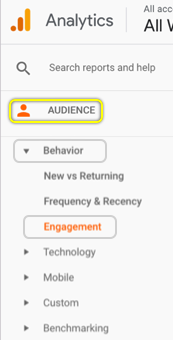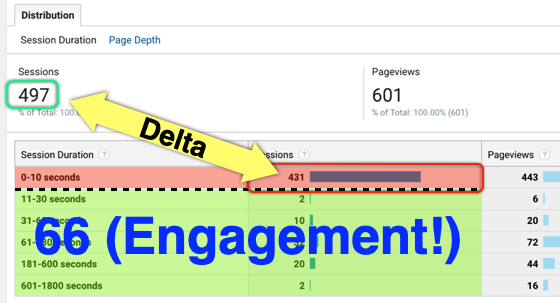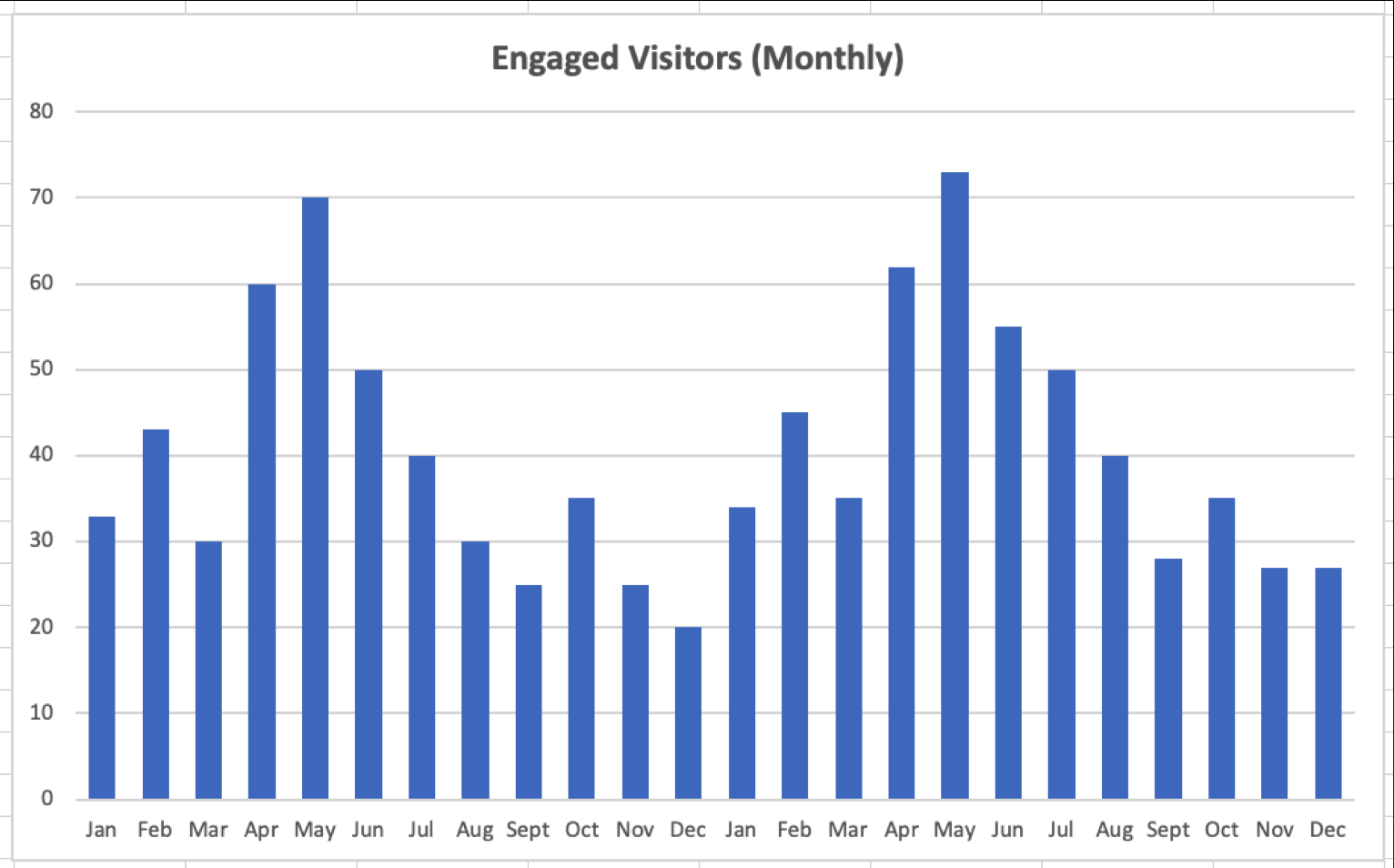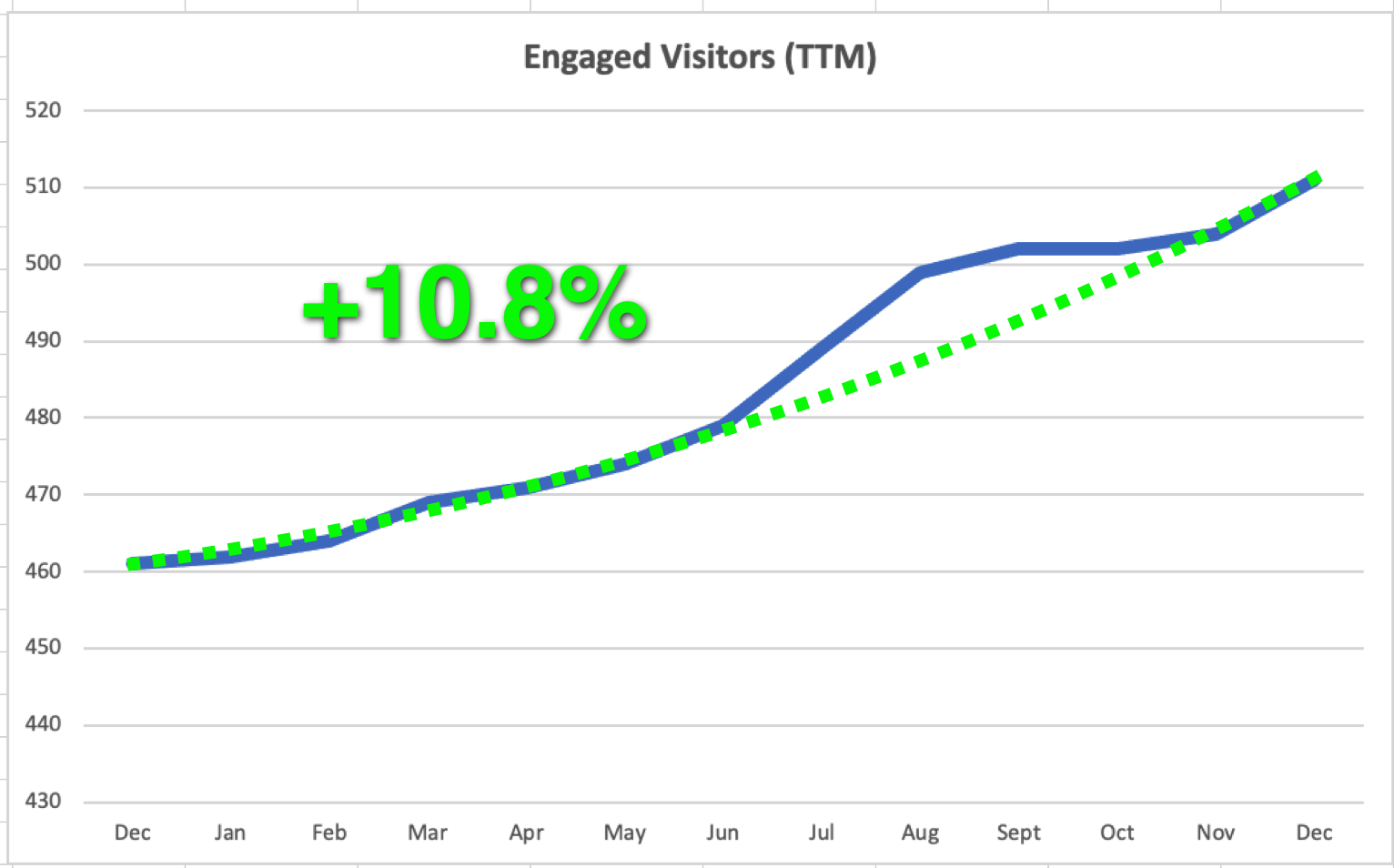Social Media / Inbound Marketing TEMPLATE: Eleven Steps to a Winning Strategy
By: Dave Nelsen
It’s not atypical for a company to decide to launch a Facebook page or begin Tweeting because they’ve seen others (most likely in dramatically different markets) achieve success with such campaigns. However, selecting your “tool / venue” should be the sixth step in your process, not the first.
If you sell B2B (business-to-business), look at your competitors and their likely misguided efforts to employ Facebook, Twitter, Instagram, TikTok, etc., to do… what? Roughly 9 out of 10 such initiatives I see are essentially check the box wastes of time. Spoiler alert: Blogging, YouTube, and LinkedIn are likely to be your best tools if you sell B2B, but do read on.
Here are 11 steps for planning a social media / inbound marketing initiative that has a significantly higher probability of success for your business. By the way, Step 5 is the critical one, the step where your competitors are likely falling down.

Step 1 – Define Your Objectives and Associated ‘Conversion Steps’
Describe the top-level objectives for your social media / inbound marketing program. What are you aiming to accomplish? What constitutes success? No doubt, you’re looking to generate more profit, to run a program that generates a positive return on investment (ROI). Who wouldn’t?
To that end, getting 100, or 10,000 followers or likes is worthless … unless you can convert a meaningful percentage of those people to customers (or whatever your conversion goal is). Keep in mind that conversion is impossible unless you have them engaged. If there’s one word to take away from this post, it’s engagement! In fact, your mantra hereafter should be Attract… Engage… Convert! No engagement, no conversions. No conversions, no revenue.
The problem is that you can’t convert followers directly to customers. Instead, there are a number of steps in your conversion path. Think about it. You’ve sold your product or service countless times. What are the typical steps in a sale? These steps should be explicitly echoed in your digital marketing presence.
Before you go further into social / inbound marketing, perhaps you should reexamine your existing website. Is it obvious on every page what you’re asking the visitor to do? If not, fix that first (why fill a leaky bucket?). Your web pages should lead a prospect through the so-called buyer’s journey (AKA along the conversion path).
If the idea of conversions is relatively new to you, here’s an outstanding blog post from our friends at Hubspot, the leaders in Inbound Marketing (40+ compelling examples):
Step 2 – Analyze the Competition (and Any Good Analogues)
Analyzing the competition or any best-in-class “analogs” is always the most interesting step for me. Why? Because every digital marketing initiative is essentially an experiment. There is no guarantee of success (sorry). Instead, check out the myriad experiments your competitors have already conducted and learn from them. If it works for them, it will probably work for you too. There’s no shame in being a fast follower. If you doubt this, look up the market cap of the world’s best fast follower. Microsoft rarely innovates and yet the last time I checked, they were the second most valuable company in North America.
You can use www.SEMrush.com (not free, but worth it) to see which of your competitors has been gaining the most web traffic in the past few years, and to learn which organic (free) and paid keywords they’re using to attract visitors. Among other things, SEMrush will show you which keywords are generating what percentage of traffic to which landing pages. Breaking into their offices and rifling through their marketing team’s filing cabinets (do people still have those?) won’t generate insights this amazing.

If a given competitor is clearly succeeding in digital (meaning that their organic inbound search traffic is growing over time), visit their website, review their recent blog posts, view their most popular videos, check out their LinkedIn Company Page, etc. Assuming that their audience is your audience, if it works for them…
A few notes on SEMrush:
- SEMrush shows inbound organic (and paid) traffic coming from the search engines. Since half of all Internet traffic starts with a search (the whole point of inbound marketing), you can roughly double SEMrush numbers to get an estimate of any competitor’s total web traffic.
- SEMrush numbers are based on a statistical sample that is then scaled up. If you compare your Google Analytics numbers to 2X SEMrush numbers, they should be in the same ballpark. However, Google Analytics data is based on exact counts (AKA actual measurements) rather than on sampling. That said, while you can access your own Google Analytics data, you can’t access the competitors’ comparable data. That’s the point of SEMrush.
- There are certain cases where you cannot rely on SEMrush data. If a site has fewer than 1,000 monthly visitors, take SEMrush data with a grain of salt. Statistical sampling may not have enough statistics, so to speak, to be that accurate. In addition, if your own Google Analytics numbers deviate by substantially more than 2X, there may be something odd about your industry’s search behavior. Or maybe… more likely you’re getting far less than your fair share of the elusive (to you) half of the web traffic that starts with a search. In which case, please keep reading!
There are several good alternatives to SEMrush. I’m arguing for process, not a specific vendor or tool. Use whatever tool works best for you.

Step 3 – Identify Your Target Audience(s)
Succinctly define your target audiences; most companies have more than one. As a rule, addressing multiple audiences with a single initiative will fail. As the old saying goes, “Chase two rabbits, catch none.”
The goal of social / inbound is not to be everywhere; it’s to be truly engaged where you choose to be. Further, different venues have different norms. For example, Twitter is short and frequent. By contrast, a meaty blog post may appear only once a month but consist of 2,000 words. (This post is, in fact, over 4,400 words).
At the same time, all organizations have limited marketing resources. Identify (AKA segment) your audiences and list them in priority order from most important on down. Serve Audience 1 first. With that going well, ask yourself, “Do we still have additional resources to deploy?” If ‘yes’, address Audience 2 next. If ‘no’, that’s fine. You’re doing an excellent job with your most important audience. Peace.
Step 4 – Find Your Keywords
Engaging content (meaning valuable, high-quality content as judged by your target audience – see Step 5) is the only way to improve your organic search rankings. Side note: 92% of all clicks on Google are on organic content. You know this if you think about your own search behavior. You, like most people, have learned to scroll past the ads shown first to access the organic listings further down page 1.
That said, I’ve got nothing against using Google advertising (so-called PPC or pay per click) as long as you can prove that you’re generating a positive ROI. But PPC represents only 8% of all Google clicks. That’s 12:1. Don’t miss the BIG game!

While you likely already discovered some great keywords in Step 2 above (SEMrush “competitors research”), they don’t know everything and, in any case, “your mileage may vary.”
To explore the larger universe of keyword possibilities, use Google’s Keyword Planner tool (free but you must create a Google Ads account to access the tool) to identify roughly a dozen additional phrases to focus on. Why not 100 or 1,000 such phrases? Maybe in time but it takes a while to move the ranking needle. To do so, you must create a decent amount of engaging content for each keyword phrase. Pursue too many keywords and you quickly dissipate your resources. “Do one thing well, not two things poorly.” (That advice also applies to your social media and inbound marketing program overall!)
In selecting your keywords, you will be dealing with two conflicting variables: 1) Search volume (a count of potential impressions per month) and 2) Competition score (a measure of bidding intensity for PPC words / phrases on a 0-to-100 basis, a good ‘proxy’ for organic competition on the same phrases). To balance these two conflicting variables, I’ve created a simple ‘Relative Value’ formula:
RelativeValue = SearchVolume / (CompetitionScore + 1)
Notice that higher search volume (better than lower) and/or lower competition (preferable as it’s easier to rank higher) result in a better relative value. The +1 in the denominator avoids a divide-by-zero problem. Feel free to modify the formula as you see fit.
It should go without saying but whether from SEMrush or Google Analytics or both, you should pick only keywords that are highly relevant to what you do AND that you believe have a reasonable probability of converting into business. What value are visitors that won’t likely become customers?
Side note: It’s a whole other blog post (to do to self …) but total visitors to your website, or gross social media followers / likes are bad metrics. Engaged visitors; that’s what it’s all about! In Google Analytics, see: Audience > Behavior > Engagement!
Having identified 10 – 20 high-potential keywords, what’s next? Use these phrases consistently in:
- Titles (page titles, blog post titles, etc.)
- URLs (the page addresses if you have control)
- The first 100 words
There’s a lot more to learn about search engine optimization (SEO) but if you master Steps 4 and 5, you’ll have accomplished the 80% that’s relatively easier.

Step 5 – Select a Compelling ‘Value Proposition’ for Each Target Audience
Easy to say: “Describe how you will provide value to your target audience.” Harder to do!
Remember, “Marketing is not about us; it’s about them.” (Guerrilla Marketing – page 1, if memory serves). Or put a different way, they don’t care about you or your company. They’ve got their own objectives and challenges (AKA problems and pain). So how are you going to create value for them?
There are countless possible value propositions but you’re most likely to discover a compelling strategy if you focus on where your customers and prospects are experiencing problems and pain that intersects with issues that you can address (without being ‘sales-y’).
A different way to explore the possibilities is to think about what you could do that is of value to them even when they’re not yet ready to buy. If you could do that, you’d be top-of-mind when they discover that they need what you do. You’d also be activating the reciprocity circuitry that is integral to all people’s brains.
Your approach is likely to be ‘educational’ although there are other strategies. Humor, for example, is awesome but … it’s a lot harder to pull off if you’re not George Carlin (Millennials and Gen Z – please see Wikipedia).
In summary, your value proposition may include one or more of education, entertainment, saving money, alerting them to key issues (without giving away your services), filtering and sharing high-quality information in your area of expertise, etc. Be as specific as possible and be brutally honest (with yourself) about the value of your content from your customer’s perspective. This is the most important facet of your strategy and is the reason that most social media and inbound marketing programs fail.
Step 6 – Select Your Specific Tool(s) and Budget
It’s a lot easier to go to your audience than to bring them to you. However, when you practice the prior you’re playing in somebody else’s sandbox. They (e.g., Mark Zuckerberg) can change the rules in ways that may destroy whatever you build on their foundation. As such, you should attend first to the things you own or can better control. Specifically, enhance the content value and keyword optimization of:
- Your website, and especially your keyword-focused landing pages
- Your blog posts (a major component of your website)
- Your whitepapers (meaning ‘relatively’ unbiased, downloadable technical content that educates your customers in a way that, no doubt, makes them more likely to move in your direction)
- Your email lists and blasts (which, frankly, should be short and sweet, more like a Table of Contents pointing to your recent blog posts and other newer, valuable digital content)

After that, pick the platform that best matches the demographics of your target audience. Said differently, where do they hang out? As mentioned earlier, most readers of this blog will find the best tools / sites to be:
- YouTube (and definitely not Vimeo. Yes, I agree that Vimeo is far more professional and more corporate than YouTube, but it’s not owned by Google!)
However, for your business there may be another choice. As of May 2022, here’s what’s happening and where (MAU: Monthly active users; apologies for being so binary with gender):

In using this table, remember that you get what you pay for (in this case, free). I’ve compiled numbers from a variety of data sources and made my best apples-to-apples adjustments. Still, things change daily.
As for your production budget, the dollar cost for at least the basic version of most of these tools may be zero or close to it, but the time budget certainly won’t be. Benchmark your industry or at least your competitors to decide what percentage of revenue should be devoted to marketing. Increasingly with social media sites, you’ll get very little ‘organic’ visibility unless you pay (please Google “boosting a Facebook post”).

Step 7 – Specify Owners; Ensure Accountability
Specify who is responsible for your overall program execution and identify the domain experts who will contribute content, if appropriate (it likely will be). It’s obvious but by designating an owner, allocating a percentage of their time (and — critically — specifying the other current activities they can shed, if applicable), you can also set metrics for deliverables (e.g., two blog posts per month – see Step 8).
Ideally, program owners will be your employees. They will become the public face of your initiatives, build relationships with a broad base of readers / viewers, and accelerate their individual learning about the issues and concerns of your customers and prospects. Why would you want these benefits to accrue to outsiders?
That said, pragmatically, you may not be able to allocate internal resources to this activity (although consider the possibility of carving out just one day a week for a key marketing person). In which case, consider crowdsourcing instead. As Peter Diamandis said in the Wall Street Journal way back in 2014, “Enterprises must Crowdsource to compete.”
Crowdsourcing means tapping into a world of specific experts via the ‘gig economy’. Any time that your company lacks expertise but cannot afford to hire a dedicated person to fill the gap, think crowdsourcing. These days you can crowdsource virtually anything. Go to Google and type, “What’s the best crowdsourcing site for X?”, replacing ‘X’ with the task you want to have performed.
For example, if you lack writing expertise or time to do so internally, my favorite crowdsourcing site for blogging is ProBlogger.com. There you’ll find lots of advice on best practices in blogging and you’ll also find a world of talented bloggers with substantial experience in your industry via the job boards there. Check it out!
Step 8 – Develop Activity/Participation Metrics
Outline the program tactics including frequency of participation, your target ‘response times’ to audience interaction (surveys, comments, etc. – it’s a dialogue, not a monolog). Note that it’s a common mistake to sprint out of the gate (publishing lots of content initially) only to discover that you’re in an ultra-marathon, no less one that has no finish line. Why?
More than a decade ago (2011), Google made its biggest algorithm change ever, at least to that point in time: Favoring newer content over older.
If you think about it, that makes sense. Newer content is likely to be of greater value to people … because it’s newer. However, that means all of your content, including your social and inbound content, is constantly losing SEO value. Therefore, once you start…

The bottom line: Content is your currency but given that it loses SEO value with age, the game is CCC: Continuous content creation!
On a related note, while we’re talking SEO: Google looks for duplicate content on the web. When they (it?) find such, Google gives full SEO credit to the original post (AKA parent) and no SEO credit to the duplicate(s) (child / children) post(s). Therefore, you should always post your content on your ‘properties’ first (i.e., your blog, your website, your landing pages, …) and then reference or duplicate that content in the other places where you’ll reach your audiences (e.g., LinkedIn, etc.). The only exception to this rule is for video content which should be posted first to your YouTube Channel and then propagated via a YouTube embed code.
Also, know that you have two potential problems as a content producer:
- If you produce too much content, you risk overwhelming your target audience. Everybody is drowning in data, same as you. How often does your target audience really want to hear from you? Think about the best blogs or newsletters (for example) that you personally read. How many posts do you consume in a month? I’m guessing not that many.
- If you produce too much content, you risk diluting your ability to deliver value. Unlike virtually every other job in the world, producing content does not become easier as you gain experience. It becomes harder … because you’ve already shared the most important things you had to say… yesterday.

Step 9 – Content Plan
Remember that domain expertise rarely resides in a company’s Marketing department (sorry – it’s true). While Marketing can drive your social program, identify the other potential content contributors inside and outside of your organization, including partners, third-party experts, industry bloggers, etc. The best stories (another key word in this post) come from your customers, your support team, your product experts, your other executives… everywhere but from the Marketing department.
The best way to succeed in continuous content creation is to share the workload. Now that we’re nearing the end of the eleven steps, you realize that everyone in the organization has to have a basic understanding of the social media / inbound marketing plan in order to contribute. With this plan, you have a way to accomplish that.
Step 10 – Develop a Promotion (Awareness) Plan
Describe how you will promote your social / inbound content to reach / attract your target audience to this program. Yours may be the best content initiative EVER but if they don’t know it exists, well… Figure out where they’re already engaged (i.e., LinkedIn Groups, blogs, technical forums, etc.) and meet them there.
Yes, your keyword strategy (Steps 2 & 4) will attract an audience in time, but you want your traffic to grow faster than that, no? At a minimum, make sure that your content initiatives are clearly visible in the major navigation (or icons) on your website. I prefer featuring such in the upper right of the home page where it’s hard to miss.
In addition, think about your business cards (if you still have them), product brochures, physical front door(s), and everywhere else possible. In the beginning, you might even consider pay-per-click (PPC) advertising to help grow your audience.
And finally, do not underestimate the power of audience propagation. Does your content feature ‘share’ buttons? It should. No, it must!


Step 11 – Measure Your Results
If there’s a critical step that most companies miss, it’s having a measurement plan. Remember, “What gets measured, gets done!”
If you’re not measuring your program in a way that can be translated to ROI, I guarantee that you’re making another big mistake — one of two possibilities. Which one I can’t say… and likely, neither can you. Without an ROI calculation, either:
- You’re running programs that are collectively costing you more than they return (AKA generating a negative ROI), in which case, they should be transformed or terminated, or…
- Your initiatives are generating a positive ROI, potentially returning many times their cost and therefore you’re underinvesting.
In either case, it’s time to start measuring. However, then the questions are, “What to measure?” and “How to measure?” This topic itself is worthy of an entire book or Ph.D. dissertation but to bring this post to a close, I’ll make a getting started recommendation.
First “what:” If the word of the day is “engagement” (and it is), with some basic math Google Analytics will allow you to track engaged visitors. Remember, Google Analytics is free, you just have to turn it on. Even if you don’t know what to track initially, have your webmaster activate it so that you’re collecting data!
After signing into your Google Analytics account (different than your other Google accounts), the tools will be displayed in the left-hand column (as shown above). Select:
- Audience ->
- Behavior ->
- Engagement
With that, you’ll see a count of total website visitors per interval (day, week, month, etc.), subdivided into ‘session duration’ groups ordered by time (in seconds as shown below).
In almost every case, if a visitor were on your website for under 10 seconds, they weren’t looking for what you do and shouldn’t be counted. Beyond that, you can draw the ‘engagement’ line wherever you like as long as you’re consistent. In my mind, if a visitor is on your site for more than 10 seconds, it’s reasonable to assume that they are engaged. By subtracting the ‘bouncing’ visitors (the shortest time group) from the total sessions, you can get a count of engaged visitor sessions, in this example a total equaling 66.

With that addressed, the question is ‘how’ to measure. Granted, Google Analytics is part of the answer but beyond that, looking at numbers day-by-day or even month-by-month has several problems. Most significantly, individual data points are noisy (meaning that they can bounce around a lot – up, down, up, up, down, …). Further, there are Google search algorithm updates every day, traffic variations due to business seasonality, and who knows what changes in competitor tactics whenever, just to name a few of the factors that can obscure the larger and more important trends.
So, we come to my favorite ‘how’ tracking mechanism: Trailing 12-month (TTM) metrics! If you’ve never heard of TTM metrics, learn about ’em on Wikipedia.
Consider the following scenario. This chart shows an example of engaged monthly visitors (or more precisely, sessions) over a 2-year period. To most people, it’s far from obvious whether this website is progressing positively or negatively. In fact, if you looked closely at the final four data points (Sept – Dec, latest year) vs. the first four data points (Jan – Apr, previous year), you might conclude that your marketing department or agency is a dud as traffic is lower.

However, when the data is transformed to a TTM view (in short: a 12-month ‘moving average’), amazingly, the picture transforms. Seasonality disappears because every single data point now contains every given date (e.g., December 26, March 14, etc.).

Another problem with many metrics is that they’re hard to read. With TTM metrics, it’s super simple. Up is always good; down is always bad. And every data point offers a true picture of performance compared to one year ago.
The only downside of TTM metrics is that they are relatively slower at revealing developing problems. As you get further into advanced measurements, consider adding 3-month and 12-month rate-of-change numbers. Here’s my favorite blog post on that topic from our friends at ITR Economics.
Summarizing this final of my recommended 11 steps, in the measurement section you should describe the expected value to the company, and optionally to individual participants, along with the specific measures of success linked as directly as possible to your program. In the above example, if you know the value of an engaged visitor and the cost of (AKA your investment in) your program, you can easily calculate the return on investment. Remember, your website and social initiatives constitute a conversion engine. As you get even deeper into measurement, begin can begin to ‘split test’ and optimize your conversion rates. Be data-driven!
In Summary
Those are your eleven steps to social media / inbound marketing / content marketing success. My guess is that in business, you rarely charge off after any new initiative without a well-defined plan. The same should be true for your content marketing program. Document these eleven steps in writing, perhaps in just a few pages, both to think through and to inform everyone on the entire team of your strategy and associated tactics. In so doing, you are ensuring continuity and engaging a larger group of contributors.
Do keep in mind that social / inbound is just one component of an overall marketing plan. Continue investing in your website, product brochures, customer forums, tradeshows, email marketing, public relations (PR), employee and customer reviews, and good ol’ IRL (in real life) networking that, in total, comprise an integrated marketing strategy. In a ‘world of mouth’, every component has a role, even as the resource allocations shift among tools. At least you’ll have a well-considered plan that has a higher probability of success.
Please leave any questions or comments below. And if you want to talk further about any of these ideas, kindly use the button below to reach out.


Apps to AI: Elevating Executive Effectiveness!
.
[email protected]
Phone/text: 1-412-779-2788
.
20436 Hwy 19, Ste 620-400
Cranberry Twp., PA 16066
